Hanfu Styles: Aoqun
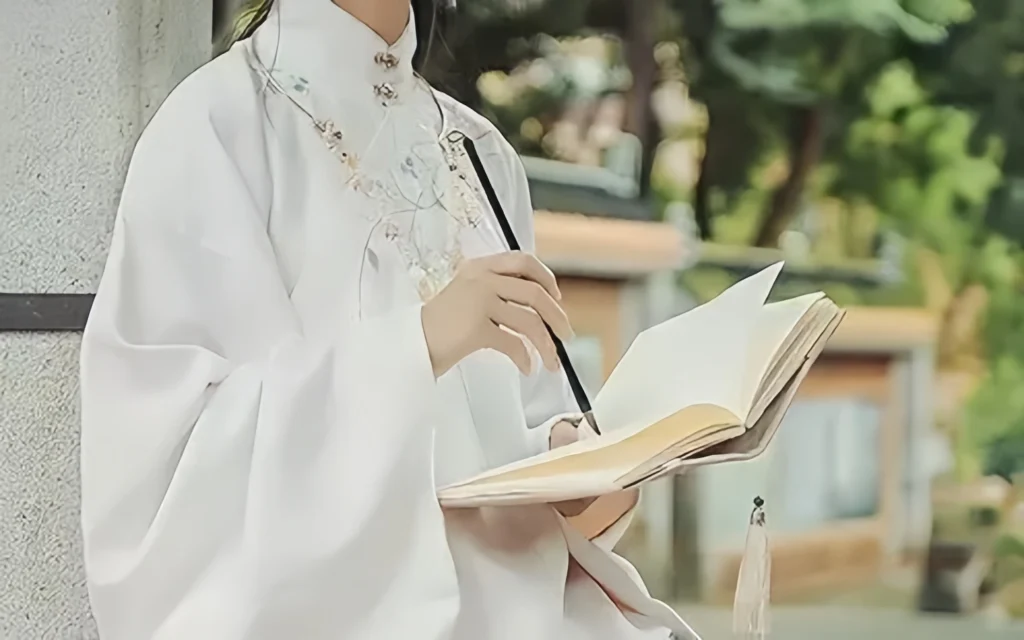
The Ming Dynasty Aoqun, a cornerstone of traditional Chinese clothing, embodies the elegance and cultural depth of Hanfu. This iconic top-and-bottom style, featuring a top (Ao) and a Mamian skirt, is celebrated for its refined silhouette and historical significance. From its origins in the Ming dynasty to its modern revival at Hanfu festivals, the Aoqun remains a symbol of timeless beauty.
Today, it’s generally understood that if the top is long enough to cover the skirt’s waistband, it’s an Aoqun. If the top needs to be tucked into the skirt’s waistband, it’s a Ru skirt. Both fall under the Ru skirt system.
The Aoqun stands out with its unique vibe, part of the mid-waist Ru skirt system and a classic top-and-bottom style. The outer top usually has pipa sleeves (tightened at the cuffs) and a white protective collar. The lower part can be a Mamian skirt or a regular pleated skirt. If the top is lengthened to cover past the knees, it’s called a “great Ao”.
For ease of movement and a sleek look, the top of the Aoqun has slits on both sides, typically up to the hips to allow flexibility.
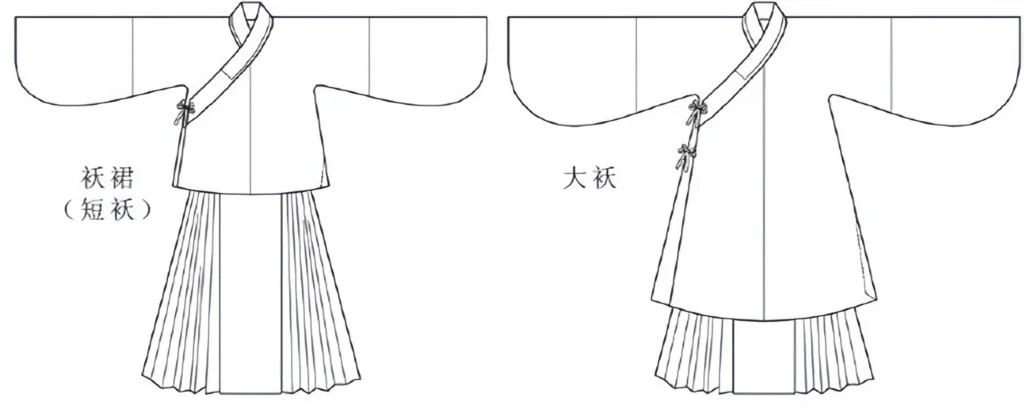
Straight-Collar Aoqun
Straight-Collar Wide-Front: Often called cross-collar today, Ming dynasty texts refer to it as straight-collar. It was popular in the mid-Ming and late-Ming southern regions.
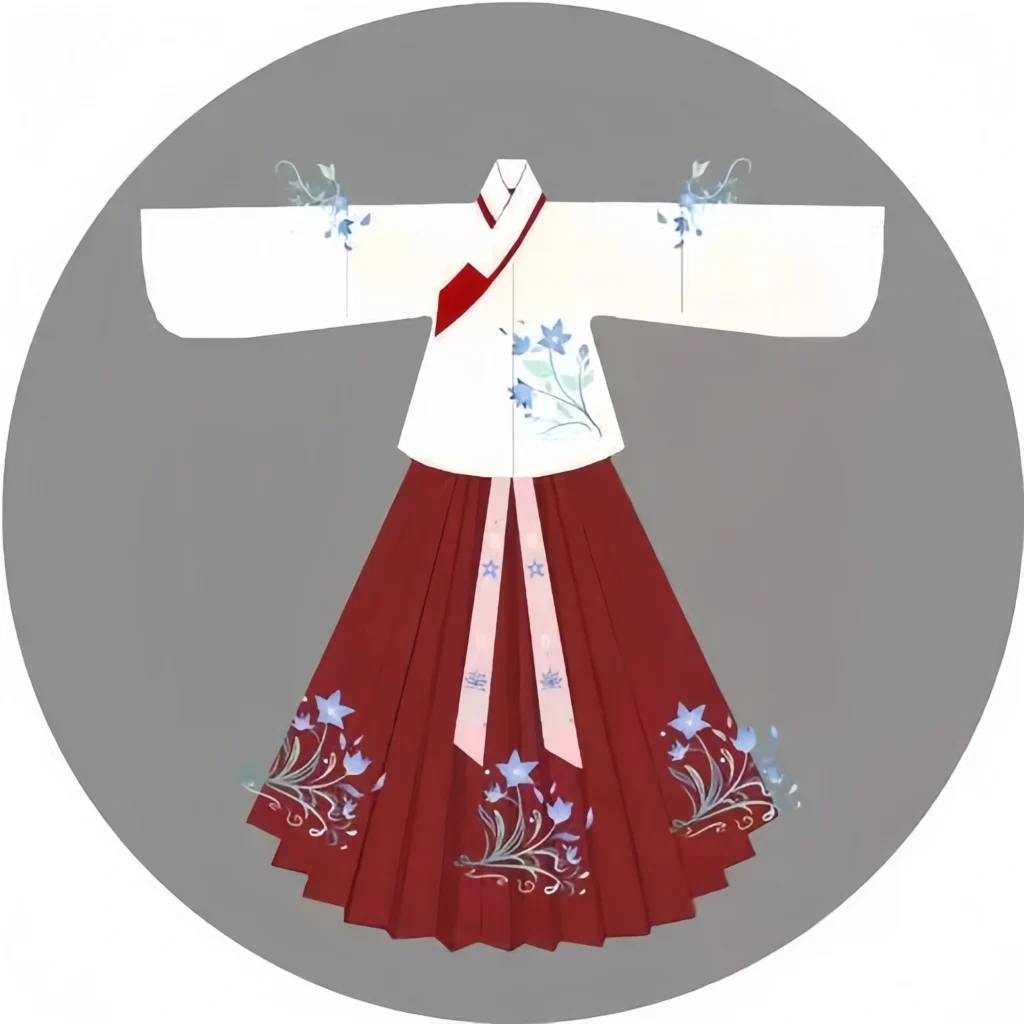
Straight-Collar Front-Tie: This style, popular in the early Ming, evolved from Song dynasty front-tie tops, worn as a wide-front style.
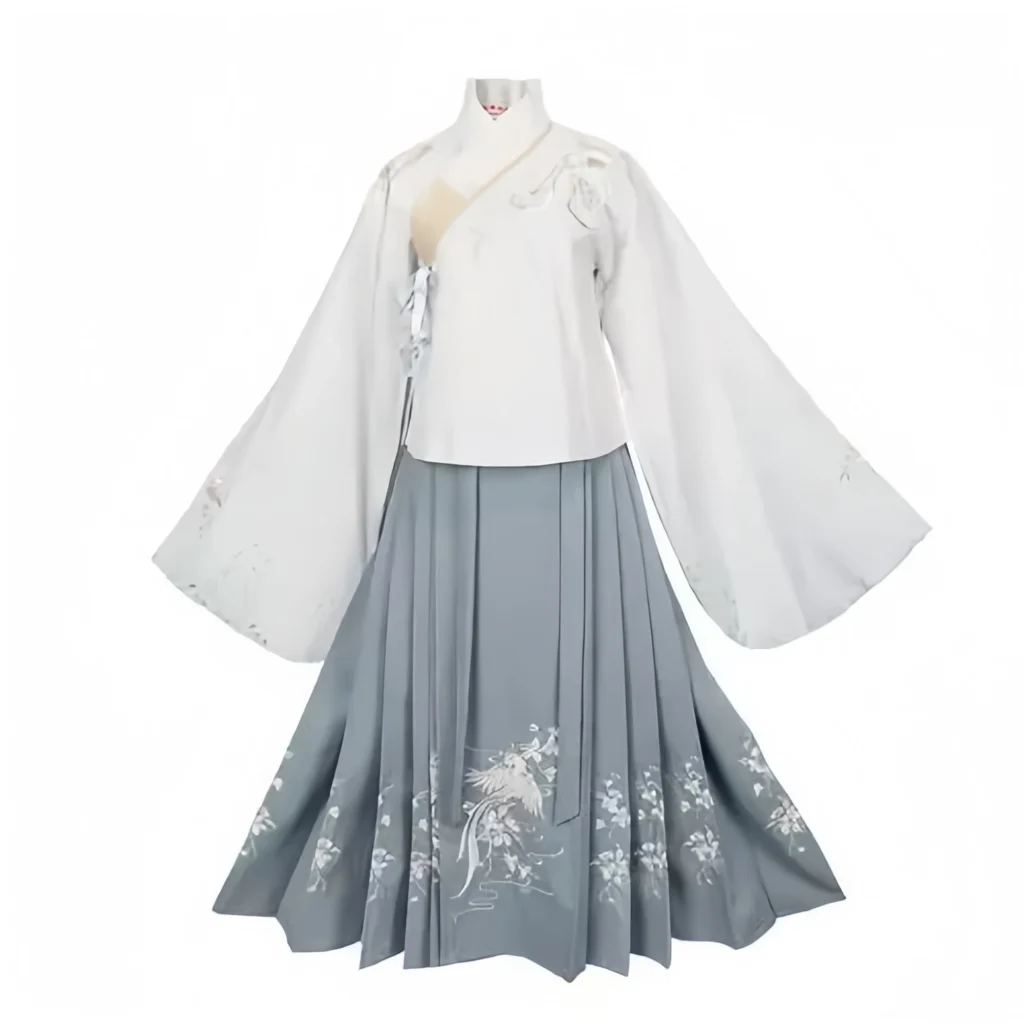
Stand-Collar Diagonal-Front
Stand-Collar Wide-Front (also called stand-collar diagonal-front): Emerging in the mid-Ming, this style built on the straight-collar wide-front. It spread from upper-class formal wear to lower-class casual wear. By the late Ming, stand-collars dominated in the north, while straight-collars remained mainstream in the south.

Stand-Collar Front-Tie: Also appearing in the mid-Ming, this evolved from the straight-collar front-tie, following the same popularity trend as the stand-collar wide-front.
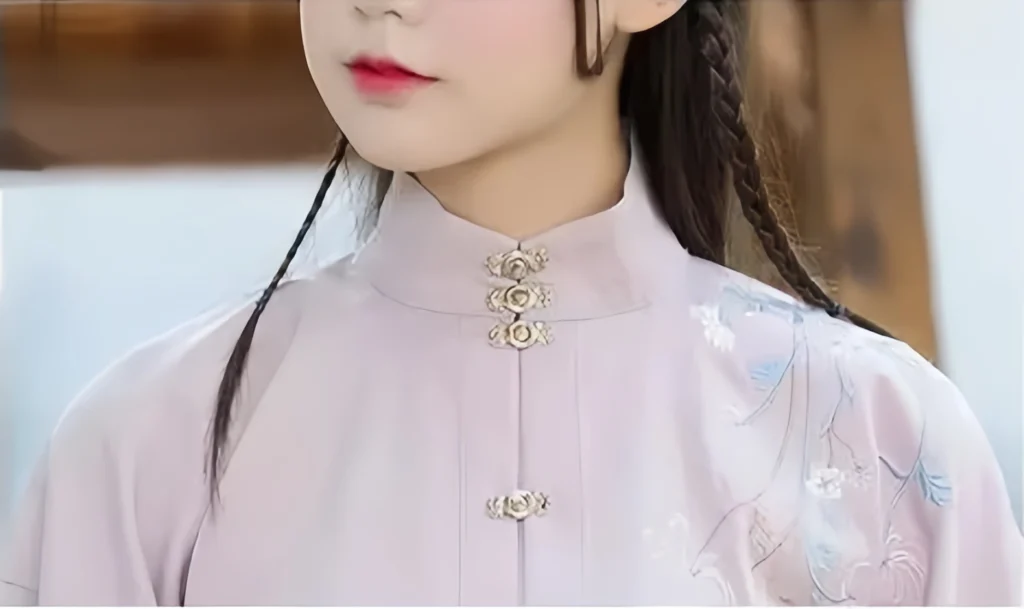
Skirts
Skirts paired with Ao tops varied across dynasties. For example, Tang dynasty used Poqun(broken skirts) with shirts or jackets, while Song dynasty paired Baidie qun(hundred-pleat skirts) with tops. Since “Aoqun” today often refers to Ming and Qing women’s wear, we’ll focus on the Mamian qun(horse-face skirt).
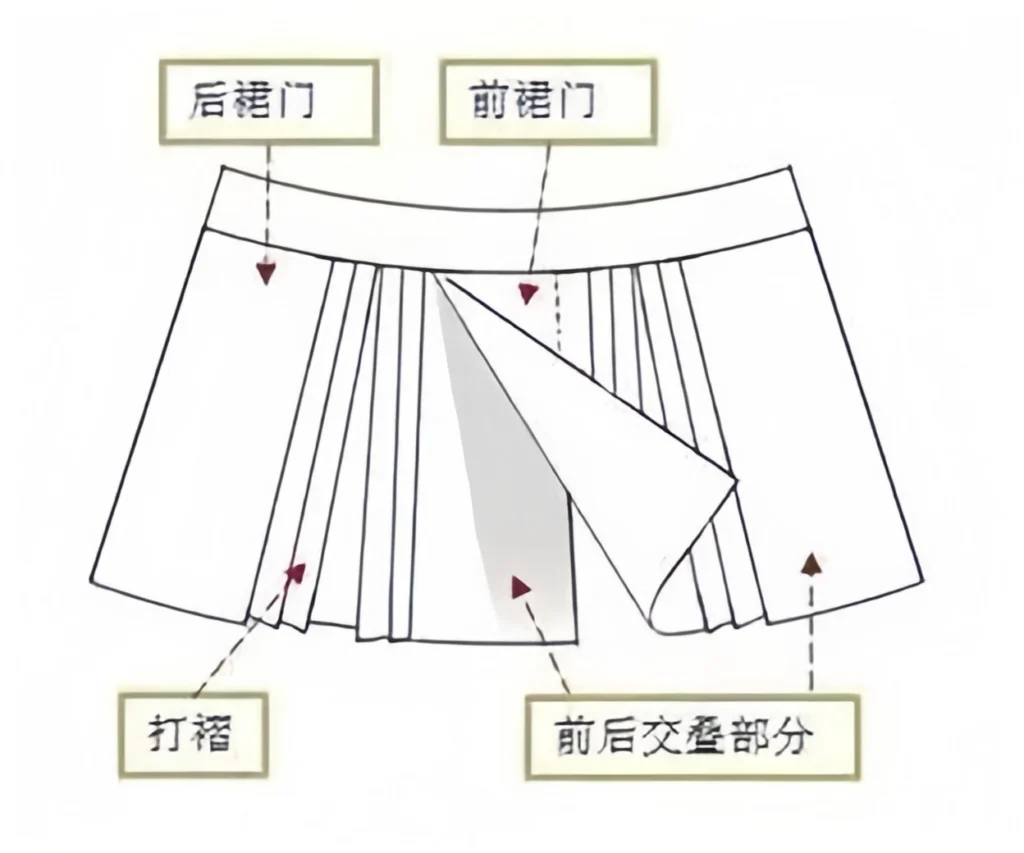
The Mamian Skirt in Ming Dynasty Aoqun
The Mamian skirt, a hallmark of the Aoqun, featured two decorative bands: one at knee level (knee band) and one at the bottom (bottom band). Unlike Tang dynasty Poqun or Song dynasty Baidie qun, the Mamian skirt offered a structured yet graceful look, making it a favorite in traditional Chinese clothing. For historical context, visit China’s National Museum.
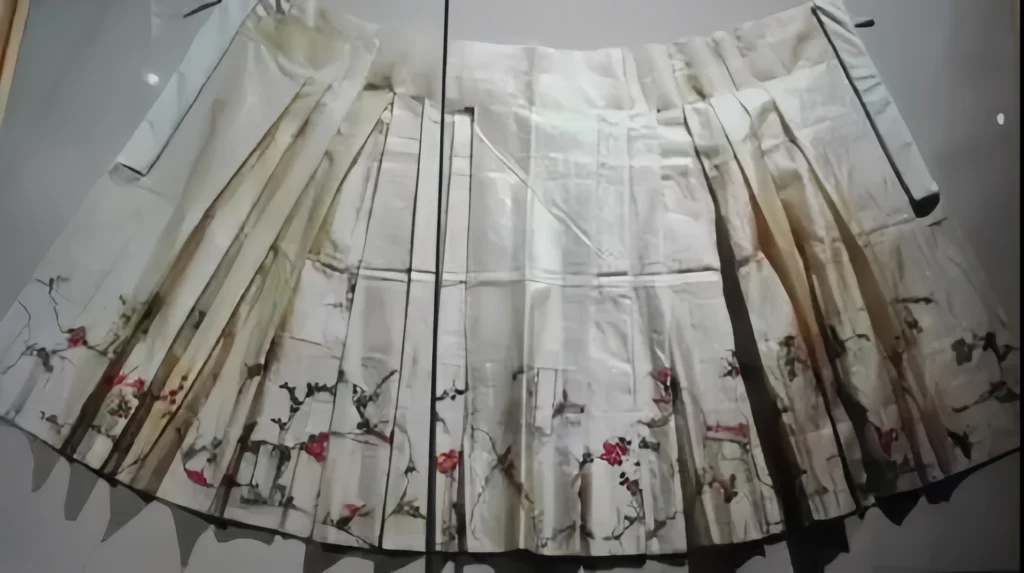
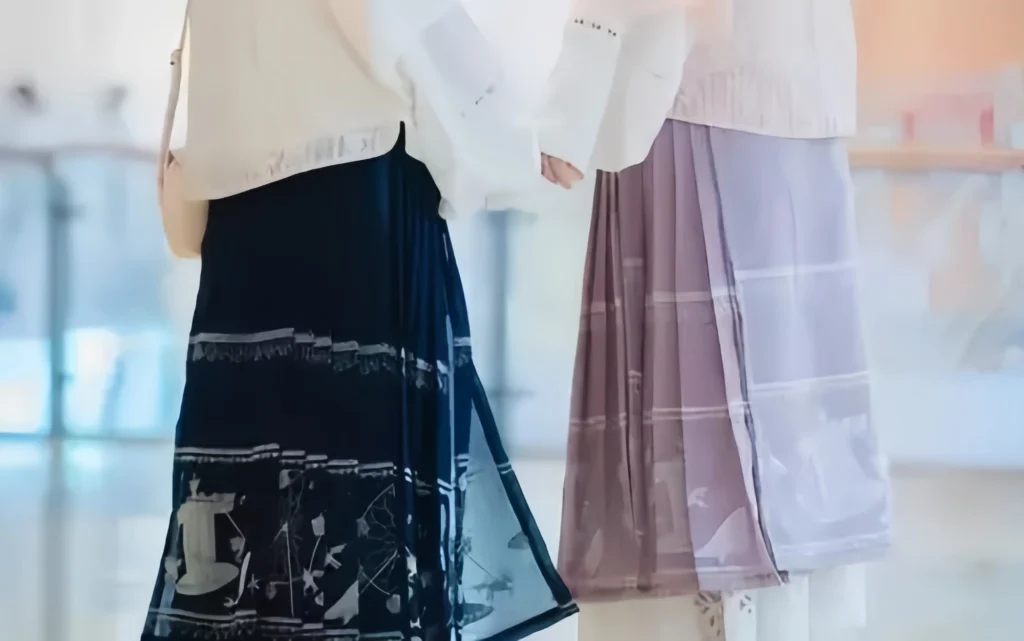
Key Features of the Aoqun
Classic top-and-bottom style.
Top has sealed cuffs, like pipa sleeves or narrow sleeves.
Bottom is typically a Mamian skirt or similar.
Why the Ming Dynasty Aoqun Matters for Hanfu Enthusiasts
Today, the Aoqun is a popular choice for Hanfu lovers, perfect for events like National Day, Spring Festival, or weddings. Its elegant design, combining a tailored top with a flowing Mamian skirt, makes it ideal for formal occasions and photoshoots, preserving the legacy of Hanfu history.
Styling Tips for Aoqun
Occasions: Wear the Aoqun for Hanfu festivals, coming-of-age ceremonies, or themed photoshoots to showcase its cultural depth.
For Women: Pair the Aoqun with delicate hairpins and a jade pendant to enhance its regal charm.
For Men: While traditionally women’s wear, modern adaptations can include a stand-collar Ao with a Mamian skirt for a unisex look.
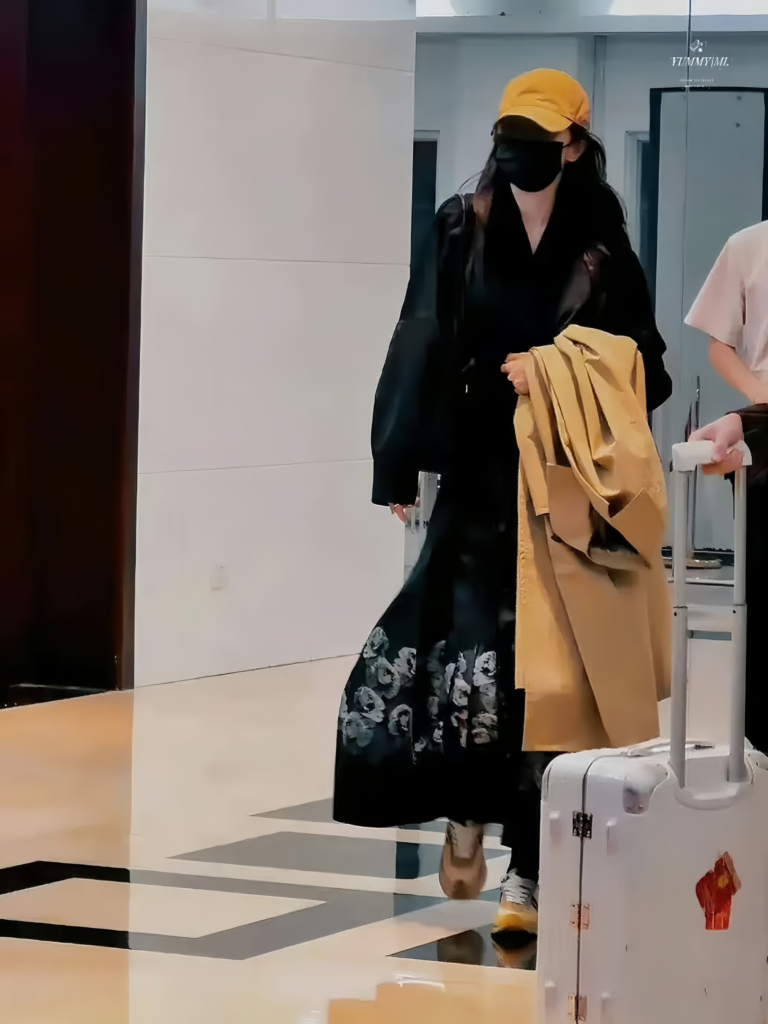




Responses